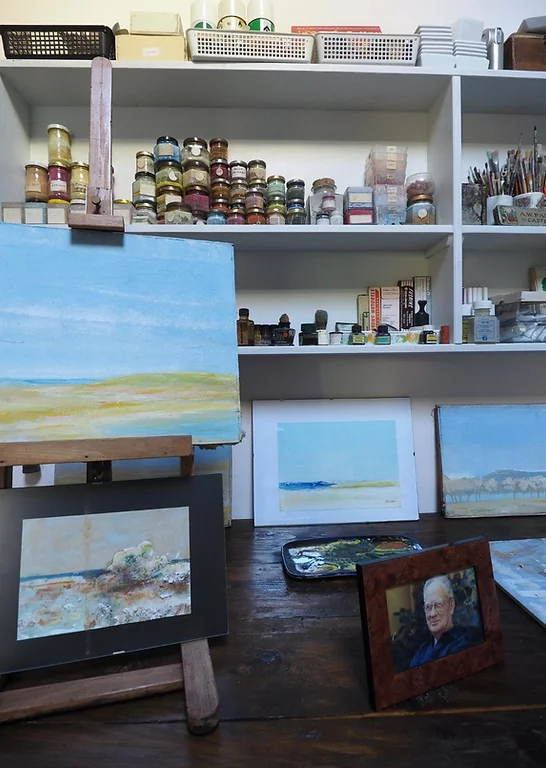Jean Constantin
Writer and painter, Jean Constantin was born in Paris in 1924. After graduating from the Sorbonne in Italian literature and civilisation, he moved to Pisa in 1952 as a lecturer in French at the Scuola Normale.
In 1964, he married Maria Severini, daughter of engineer and painter Federigo Severini, professor of art history at the University of Pisa and author of the catalogue of drawings and prints in the Timpanaro Collection.
In the twenty years he spent in the Tuscan city, Constantin found a privileged source of inspiration in the environments of the Pisan coastline and hinterland, devoting more and more time to translating onto paper the sensations aroused by the variety and light of his much-loved landscapes. He is also responsible for a long and complex work of archiving the work of Federigo Severini.


In 1972, he returned to Paris with his family and founded the ‘Fédération nationale des associations d’italianistes’ (FNAI) with the aim of promoting the teaching of Italian language and culture in France. Painting became his main activity, so much so that he transformed two rooms of his Parisian flat and his Pisan villa into painting ateliers. For almost twenty years, in those ateliers, the artist would produce thousands of sketches that, out of natural and elegant reserve, would never be exhibited.
In June 2009, Jean Constantin died in Pisa at the age of 84, leaving behind a work of great poetic intensity and formal quality that, thanks to the care of his son François, was presented to the public for the first time in 2013 at the Museo della Grafica in Pisa.‘Rivages’.

Rivages
Jean Constantin’s work consists of multiple, imperceptible variations on the theme of the ‘shore’ (rivage) as a magical and poetic meeting point between water, sky and earth.
Shores of a natural and recognisable landscape (San Rossore, Marina di Pisa, Bocca d’Arno…) that gradually fade into increasingly abstract contours, where lights and horizons acquire an essential meaning of intense lyricism. And where the subtle and insistent chromatic variables, in a slow process of refined and conscious abstract synthesis, can explain and multiply the miraculous balance of fading surfaces and atmospheres, in which water expresses that ‘vaporous coefficient of universality’ and ‘the sky is free and the earth oppressed’.
Every single piece of this thoughtful and profound pictorial progression, dilated in time and space, meets and unites in an idea of a series that is in turn recomposable and multipliable. For this reason, Jean Constantin has entrusted his son François with the task of organising the presentation of his rivages, imagining that each of them could fit into ‘apparentamenti’, that is, coherent series of sheets (3, 9, 12, 16 and more) assembled to form a single image, strong and enveloping, in a fragmented but indivisible whole, somewhere between a Roman mosaic and a collage of exploded pixels, in search of an emotional vision of the infinite.